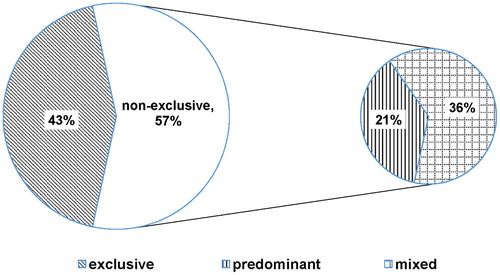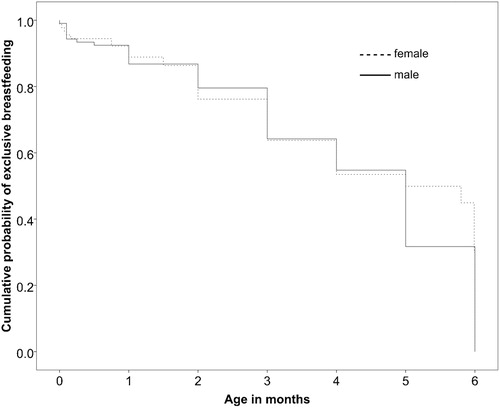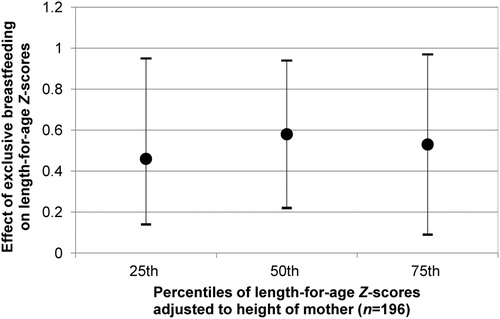Figures & data
Table 1. Maternal and infant socio-demographic characteristics stratified by breastfeeding practice
Table 2. Frequency of giving liquids and complementary foods in the previous 24 hours to non-exclusively breastfed children
Table 3. Variables associated with breastfeeding practices
Table 4. ANCOVA results of breastfeeding practices associated with growth of the child
Table 5. ANCOVA results of breastfeeding practice associated with infant’s, disaggregated into five age groups
Table 6. ANCOVA results of breastfeeding practice associated with infant’s WLZ, disaggregated into five age groups



